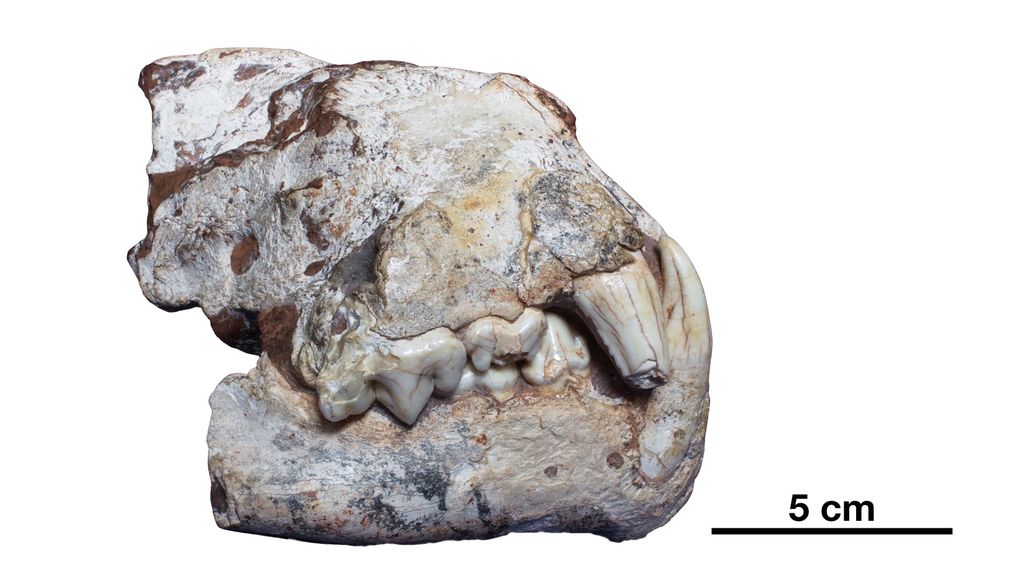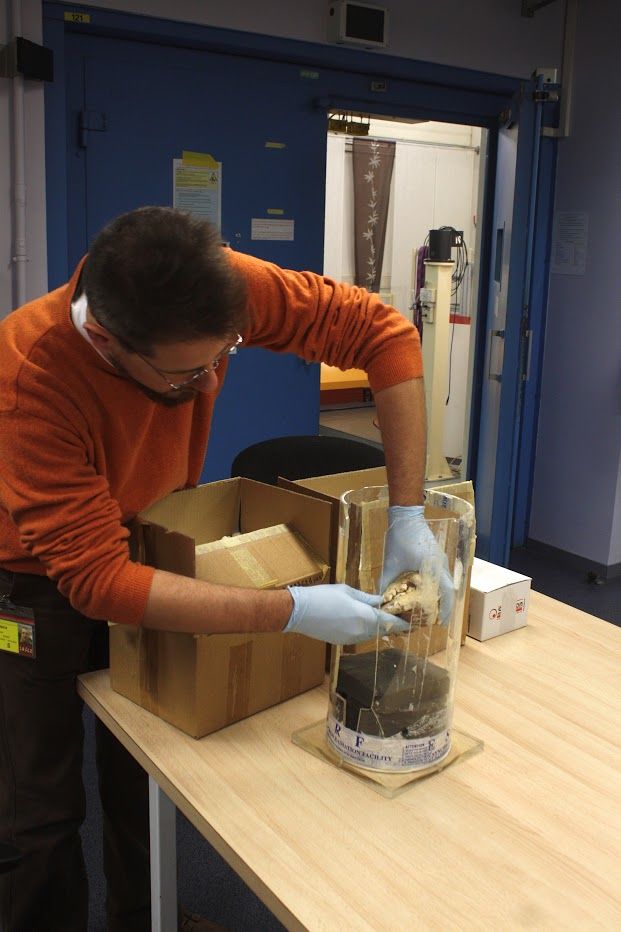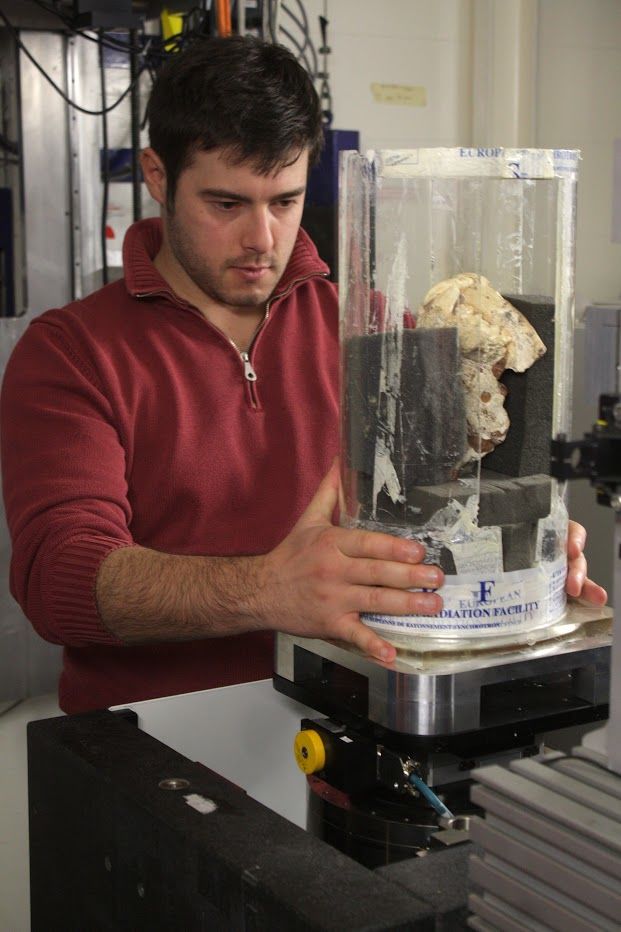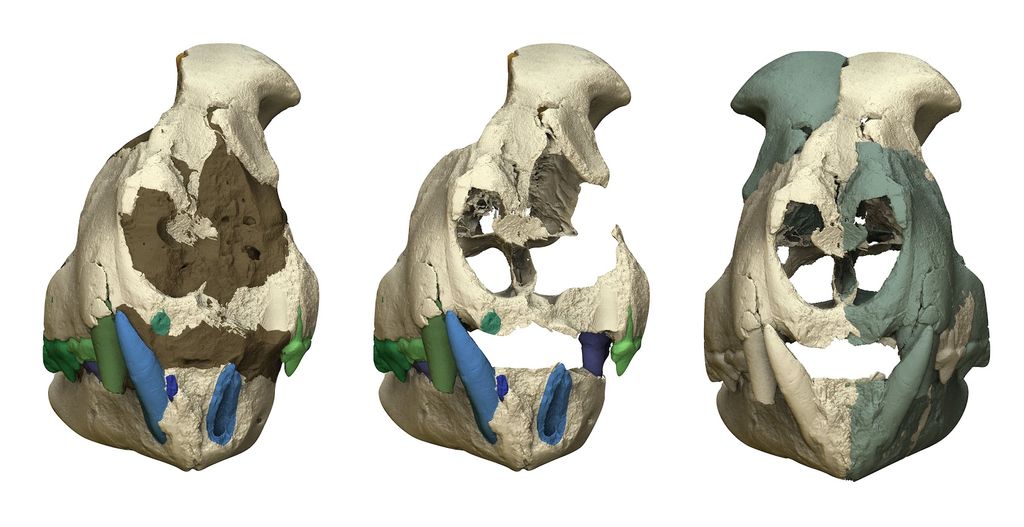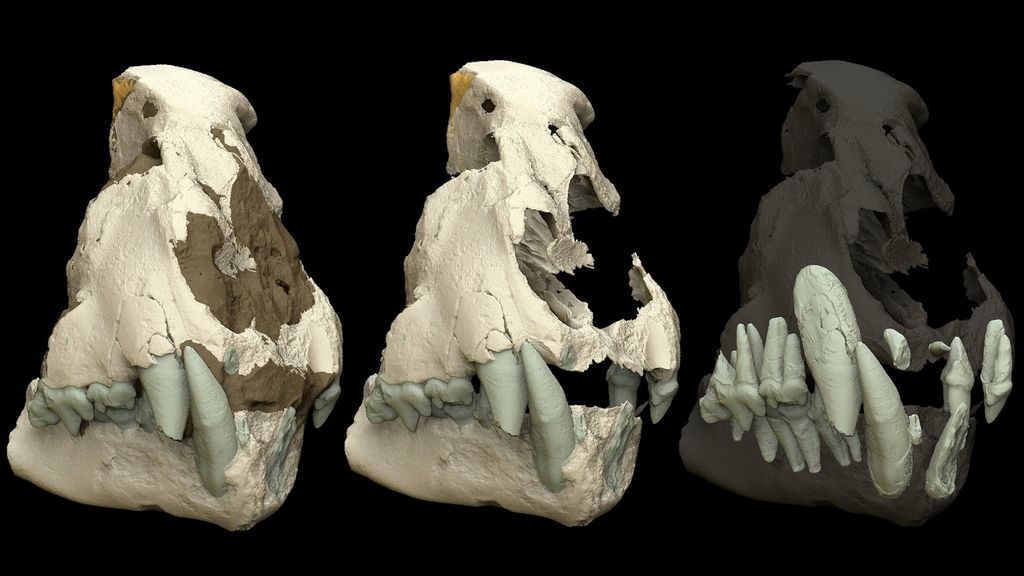
Unveiled the giant cheetah identikit: the predator which lived 1,5 milion years ago
The results of a new research, led by Raffaele Sardella and Dawid Iurino of the Department of Earh Sciences of Sapienza University of Rome, have been recently published on the renomated journal Scientific Reports. Sardella and Iurino are part of a multidisciplinary team including also palaeontologists and physicists from the universities of Perugia and Verona, in collaboration with the European Synchrotron, ESRF. Synchrotron microtomography has been used for the first time to scan the skull a fossil large felid.
X-ray based tomographic methods developed at the ESRF allowed the scientists to virtually extract the fossil from its host matrix, a reddish rock block with a similar density to the fossil. The combination of hard X-rays, high beam intensity and partial coherence provided huge amounts of information on the external and internal morphology of the specimen down to the micrometre scale.
The analysis of images and 3D models obtained revealed a mosaic of cheetah-like teeth and Panthera-like features leading to a reconsideration of the ecological role of this species. High-resolution 3D images obtained at the ESRF’s ID17 beamline revealed previously hidden anatomical features, including sutures between the bones of the palate and the complete morphology of the teeth. The latter are just some of the elements that made it possible to refer the skull to the species Acinonyx pardinensis, the Plio-Pleistocene giant cheetah.
The skull was discovered on Monte Argentario in Tuscany at the beginning of the 20th century. During this period the earliest humans spread into Europe, around 1.5 my ago. Many animals and their extinct ancestors also evolved during this period such as the sabre-toothed cats, giant hyaenas, Southern mammoths and rhinos and other species. Until today, and because of the fossil’s imprisonment in the rock, the observation of the anatomical details needed for taxonomic determination was impossible without damaging the fossil, hence the debate over its identity. The characteristics observed on the fossils of Acinonyx pardinensis, however, tell of a felid slower than a modern cheetah, but strong like a jaguar and heavy like a lion. These characteristics make it one of the top predators in the trophic network of the Plio-Pleistocene ecosystems, next to sabre-toothed cats and giant hyenas. The study on the Monte Argentario felid has to be considered as the starting point for a review of the entire Old World sample of giant cheetah and the redefinition of its evolutionary history.
References:
Synchrotron radiation reveals the identity of the large felid from Monte Argentario (Early Pleistocene, Italy) - Marco Cherin, Dawid A. Iurino, Marco Zanatta, Vincent Fernandez, Alessandro Paciaroni, Caterina Petrillo, Roberto Rettori & Raffaele Sardella - Scientific Reports volume 8, doi:10.1038/s41598-018-26698-6
Further Information
Raffele Sardella
Department of Earth Sciences
T (+39) 06 49914159
Raffaele.sardella@uniroma1.it
Dawid Adam Iurino
Department of Earth Sciences
dawid.iurino@uniroma1.it
